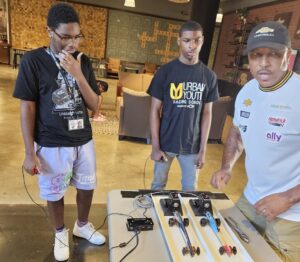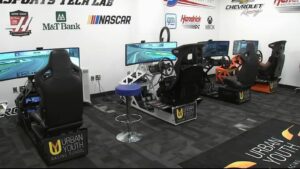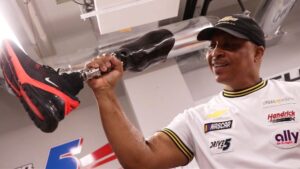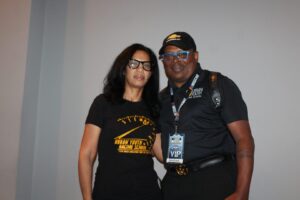[title size=”3″]Urban Youth holds award banquet[/title]
- The Philadelphia Tribune – Written by Damon C. Williams Monday, 22 April 2013 19:22
Urban Youth students work on engines at lab. — PHOTO COURTESY URBAN YOUTH
[dropcap]T[/dropcap]he re-branded Urban Youth academy – which consists of the Urban STEM Academy, the Urban Youth Racing School and the What It Takes Foundation – will honor its most dedicated students during Tuesday’s “Build a Dream” banquet at the National Constitution Center.
Urban Youth will dole out several awards, including those for perfect attendance, perseverance, little racers, teen RACERS and parents. The nonprofit will also dispense naval engine design awards, a Chevy Points Championship Trophy, a Trailblazer award and finally, a Sponsor of the Year award.
“This is an historic moment in our program. We’ve been around for 15 years, and to be an African American nonprofit still thriving is amazing,” said Urban Youth Founder Anthony Martin. “And it’s historic for our kids, too. They are receiving awards and rewards for participating in the program the last year, and we’re going to have alumni come back and talk about their experiences here, and what has made them a success in their lives.”
At the event, auto giant General Motors will continue its partnership with Urban Youth, as Jim Campbell, Chevrolet Vice President of Performance and Motor Sports, will present to Urban Youth a check for $125,000.
“We really wouldn’t be here today without the support of GM,” Martin said, noting that GM has been one of the biggest sponsors of Urban Youth, sticking by the program even when other sponsored bailed out when financing became tight.
Throughout its award-winning history, Urban Youth has kept its students steeped in STEM – science, engineering, technology and mathematics; it has partnered with the U.S. Navy to have Urban Youth students work on actual naval engines and nautical turbine research at Tuskegee University, and Urban Youth students have created awe-inspiring racecar designs, and unique engine configurations.
Martin gave an interesting scenario in which his students were approached by the military to not only build an engine, but to defend its use and itemize its benefits
“For this past year in the Naval Engine Design program, the Navy built a ship in 1995 called the Arsenal, but Congress decided not to fund it, deciding to fund the Ohio Class submarine fleet instead,” Martin explained. “The Navy asked our kids to go look at the Arsenal ship, come back with some suggestions about what engine to use in that particular ship, why the engine the students chose was best, and how much money the Navy could save by using that engine.
“They did that, and their presentation was off the charts,” Martin continued. “By being hands-on and working with engines, these kids are seeing what they do and why math is so important. They understand the math behind cylinders and pistons. It gives them a new reasoning behind what they are doing.”
Martin couldn’t stress enough the importance of the hands-on method of teaching and learning. For Martin, when it comes to the physical properties and proportions of engines, there’s only one real way to learn. And that these kids can see a lucrative future certainly helps.
“Hands-on is beyond important. It gives them the opportunity to see how something operates, and it becomes real to them, rather than something that’s on paper in a classroom,” Martin said. “When they are hands-on and actually working on an engine, they get the idea of why then need to know [STEM], and they begin to think critically.
“It becomes relevant for them,” Martin continued, noting that the ears on most students perk up when Martin mentions that engineers fresh out of college can demand salaries upward of $80,000 annually. “The see the relevance of how things operate, and at the end of the day, they can make money doing it.”
http://www.phillytrib.com/newsarticles/item/8782-urban-youth-holds-award-banquet.html










